Gma's and Gpa's Great Adventures
Maita’i oe
It’s Monday morning and the clouds are unloading on us – time to move from Taha’a on to Huahine. As we enter the main pass into Huahine by Fare, the largest town, we see several surfers waiting to catch a big wave along the outer reef. For all the huge waves surrounding all these islands, we are happy to finally see some surfers. (There are actually several signs posted along beaches warning that it is too dangerous to surf in that area.)
The name Huahine literally means "woman's sex"; the profile of the island with Mount Tavaiura resembles a pregnant woman lying down. I somewhat prefer its ancient name of Matairea, meaning “Happy Wind”. The winds out at sea are currently quite strong, so we are holing up in the calmer lagoon waters of Huahine with happier winds.
RUTH METZ
32 chapters
29 Jan 2023
Huahine
French Polynesia
Maita’i oe
It’s Monday morning and the clouds are unloading on us – time to move from Taha’a on to Huahine. As we enter the main pass into Huahine by Fare, the largest town, we see several surfers waiting to catch a big wave along the outer reef. For all the huge waves surrounding all these islands, we are happy to finally see some surfers. (There are actually several signs posted along beaches warning that it is too dangerous to surf in that area.)
The name Huahine literally means "woman's sex"; the profile of the island with Mount Tavaiura resembles a pregnant woman lying down. I somewhat prefer its ancient name of Matairea, meaning “Happy Wind”. The winds out at sea are currently quite strong, so we are holing up in the calmer lagoon waters of Huahine with happier winds.

Over 100 miles away from the hustle and bustle of Tahiti, Huahine, with its lush forests, untamed landscape and quaint villages, offers the slower, more tranquil pace of old French Polynesia. A deep, crystal-clear lagoon with deep bays, lots of wild shoreline spotted with white sand beaches surrounds the two islands of Huahine Nui and Huahine Iti which are connected by a bridge.
On our around the islands road trip, there is so much to see and do:
* The island offers a rich soil providing the local farmers a bountiful harvest of vanilla, copra/coconuts, cucumbers, watermelon, cantaloupe, taro, yams, bananas and seasonal tropical fruit. We also see small herds of beef cattle grazing their green pastures.
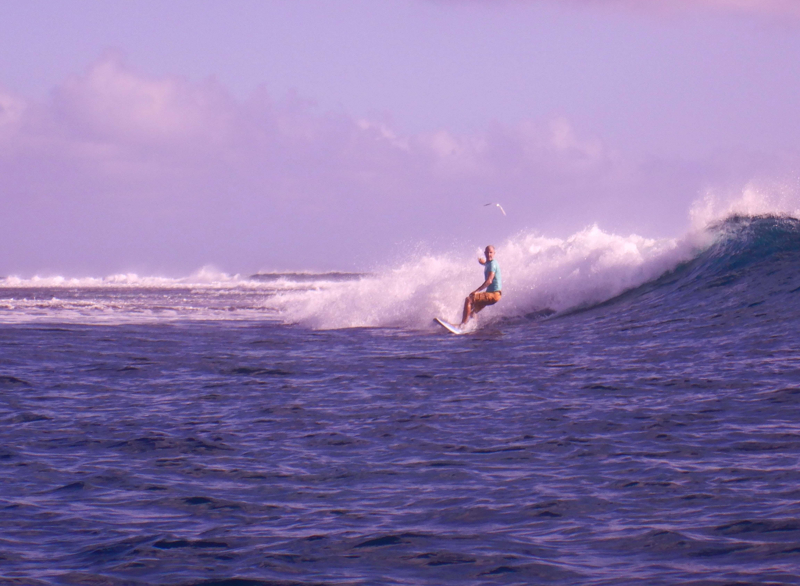



* Huahine is home to one of the largest concentrations of Polynesian archaeological remains dated between 850 AD and 1100 AD. The Maeva Marae was the seat of the royal rulers of Huahine prior to European arrival and was later abandoned. Excavation and restoration has revealed many sites of marae (tradition temples and platforms) – over 30 of them. Likely, this was a large center where ancient Polynesian nobility lived. A reconstructed traditional meeting house is now a museum complete with woven bamboo floors. It was nice to see a group of locals continuing to uncover and restore this historic site.
* Out on the waters of the lagoon are ancient fish traps – a series of V-shaped fish traps, made from rocks, where the fish would swim and be guided into during the incoming tide and then get trapped when the water recedes. They have been here for centuries and some are still in use.
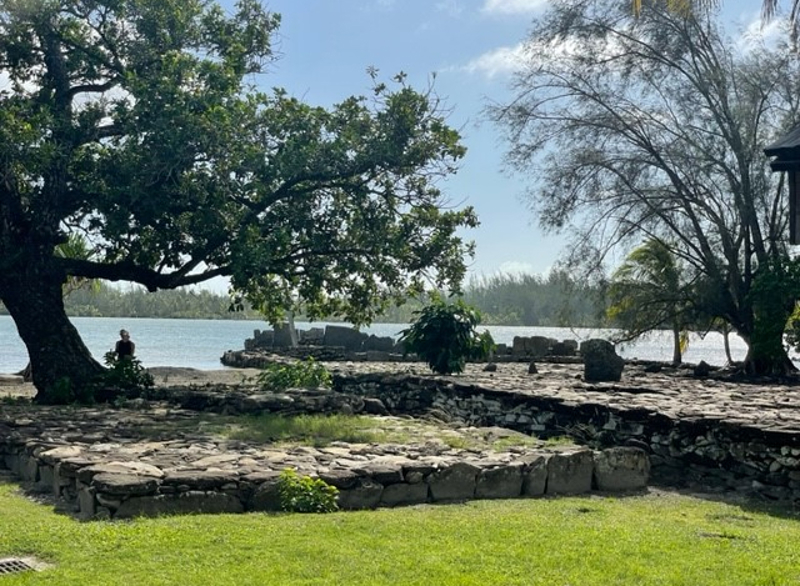
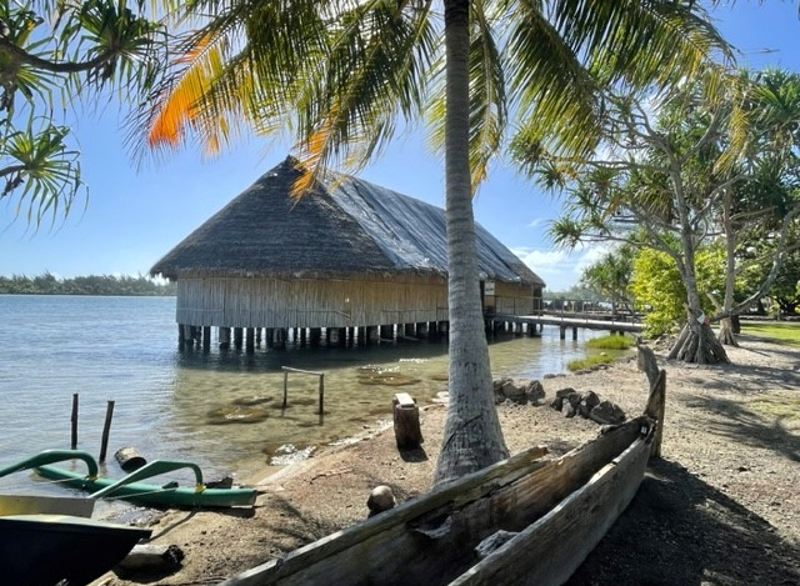
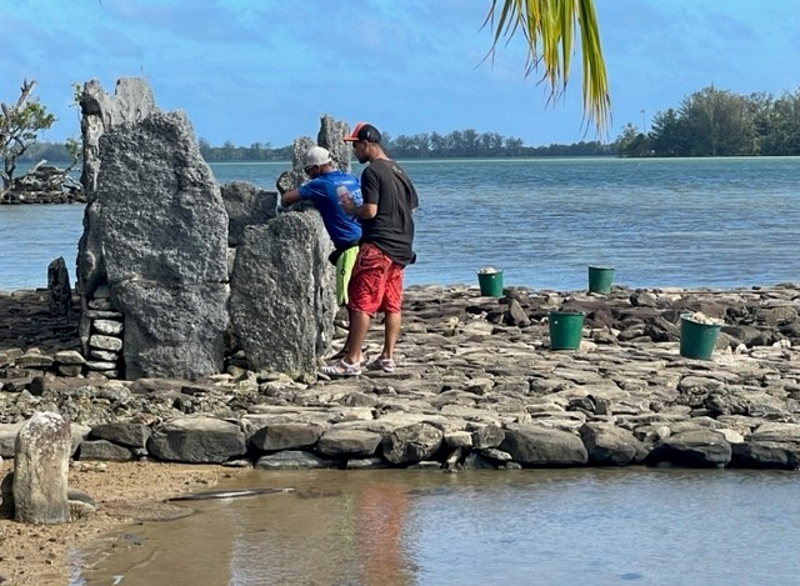
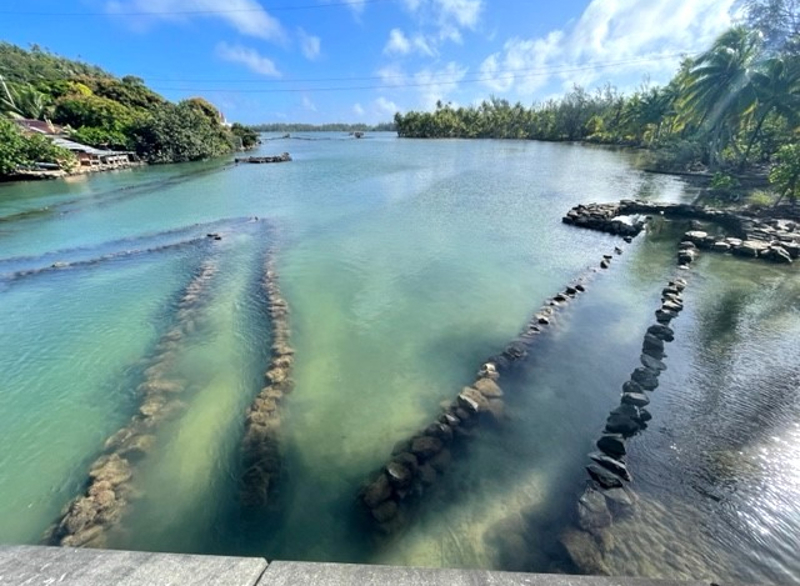
* Lunch at Izzy’s for a beer, burger & frites.
* Bobby Holcomb – artist and musician settled here in the 1970’s. Originally from Hawaii, he immersed himself in the local Ma’ohi history and cultural revival. Among his large following was Jimmy Buffet, who he mentored and collaborated with.
* One of the famous attractions on Huahine are the “sacred freshwater eels”. These ugly blue-eyed slithering creatures, deemed sacred by local mythology, lurk in the shade of the river at Faie. Glad we didn’t have to snorkel to see them! Legend has it that the eels hold the spirits of the dead islanders.
* We visit Frank’s private shell collection at the boutique Motu Tresor with over 500 species of shells. We learn that some shells are poisonous and or deadly when they are alive. They cause 2-3 deaths

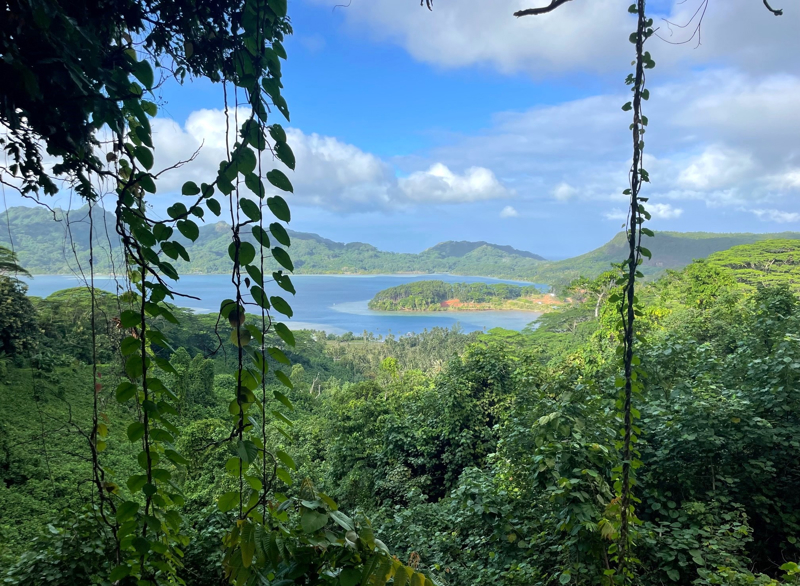
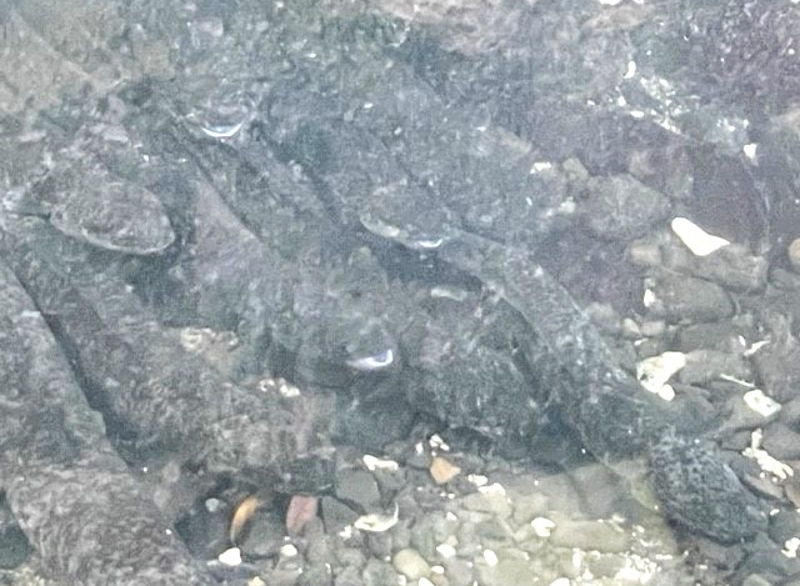
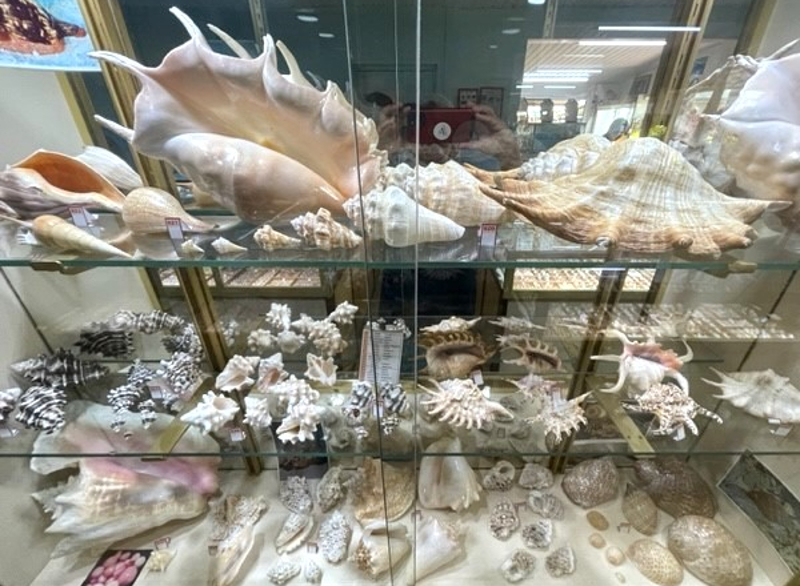
per year (similar to shark). But who wants to admit they were killed by a small sea shell compared to a shark? Thus, you don’t hear much about these types of deaths. The interesting thing is that the critters living in these shells are afraid and will retreat when threatened. They don’t try to kill or injure humans. It is the curiosity and greed of humans that gets them stung. Humans see the shells in the sea, pick them up, put them in their pocket and whamo – they get stung. The shells can cause paralysis within 2 hours and then death. They are 32x more deadly than the cobra and there is no vaccine or antivenom. Guess we will be more careful now!
* We were pleasantly surprised to see a large group of smaller sailboats along the outer motu Murimahora – looked like a large sailing school and/or competition gliding along the shallow lagoon waters. There’s no bridge to get there, so we watched from a distance.
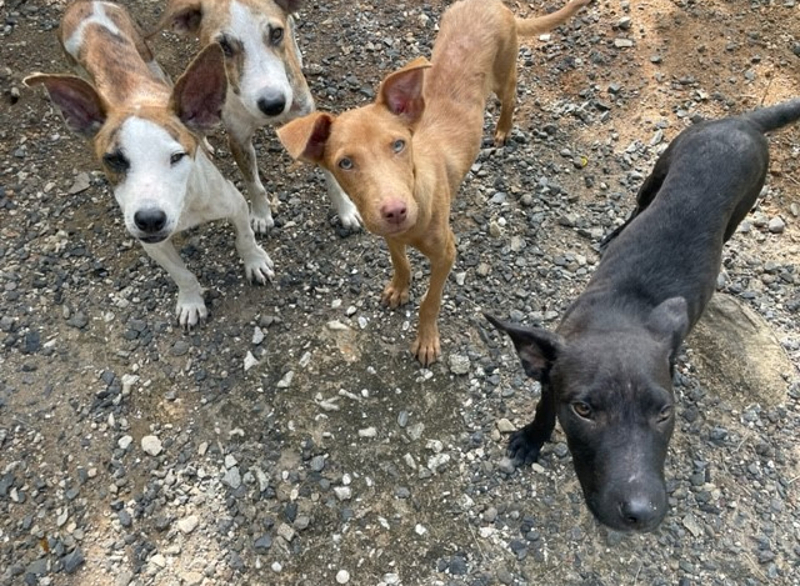
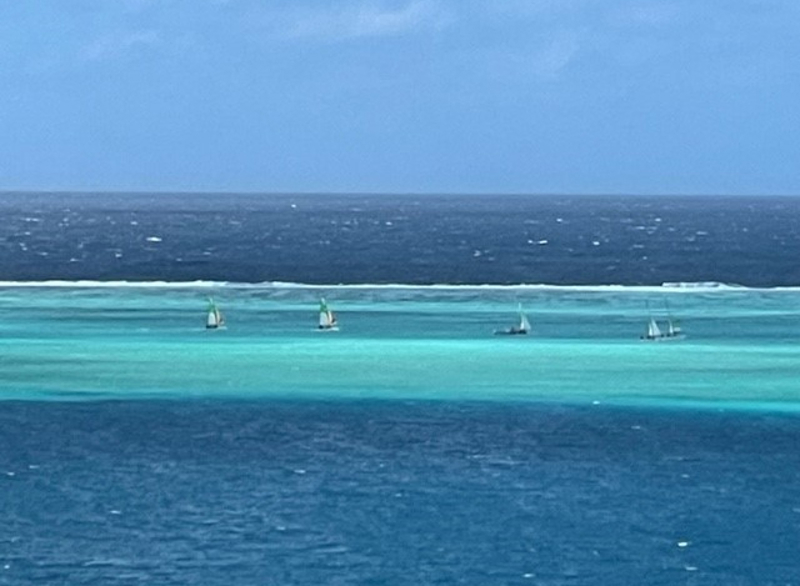
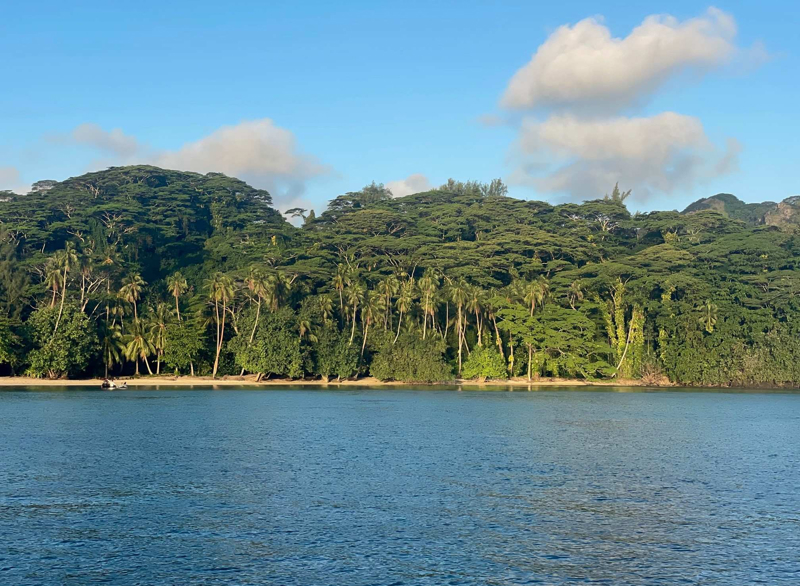
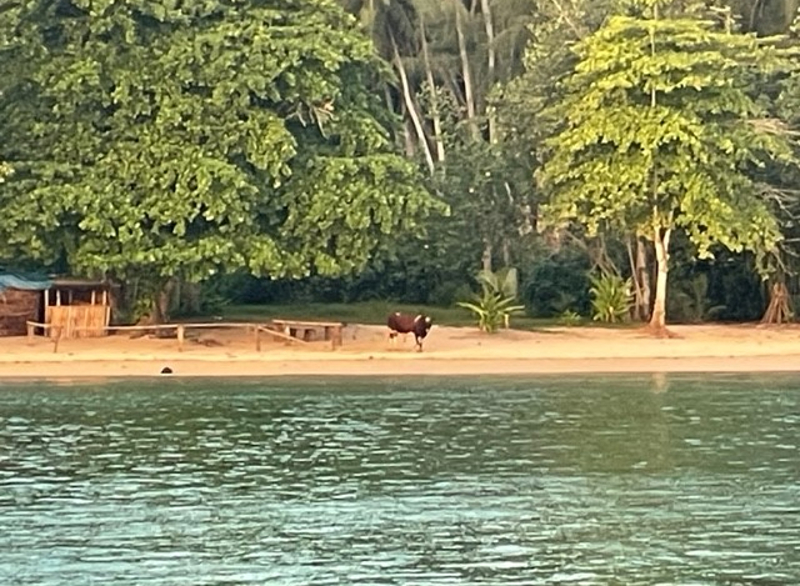
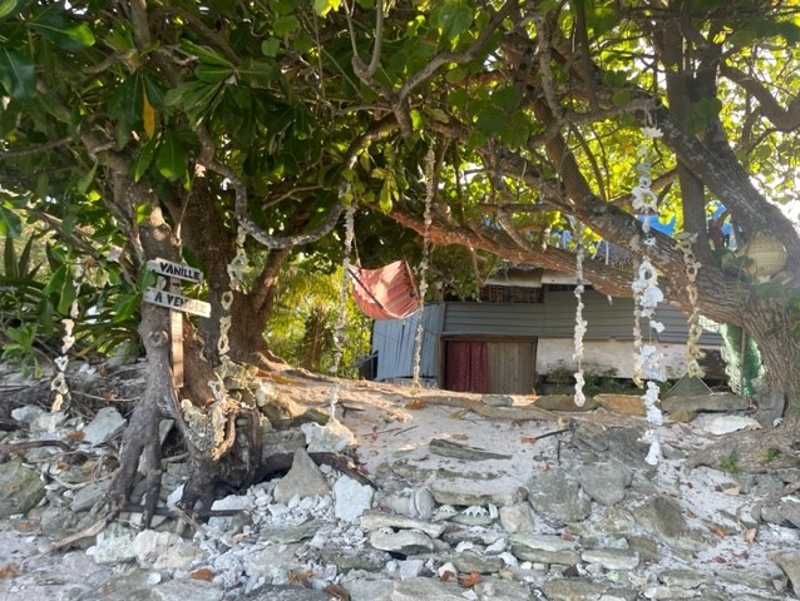

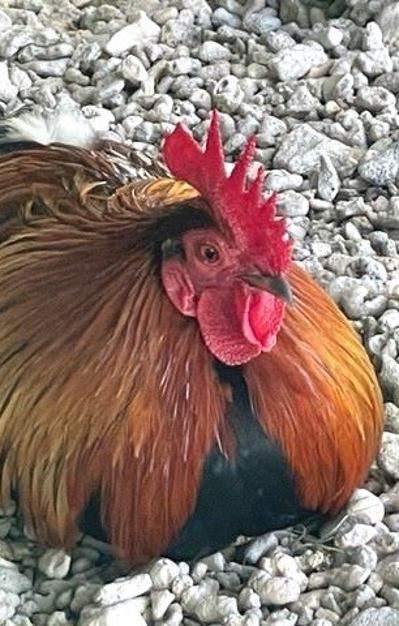
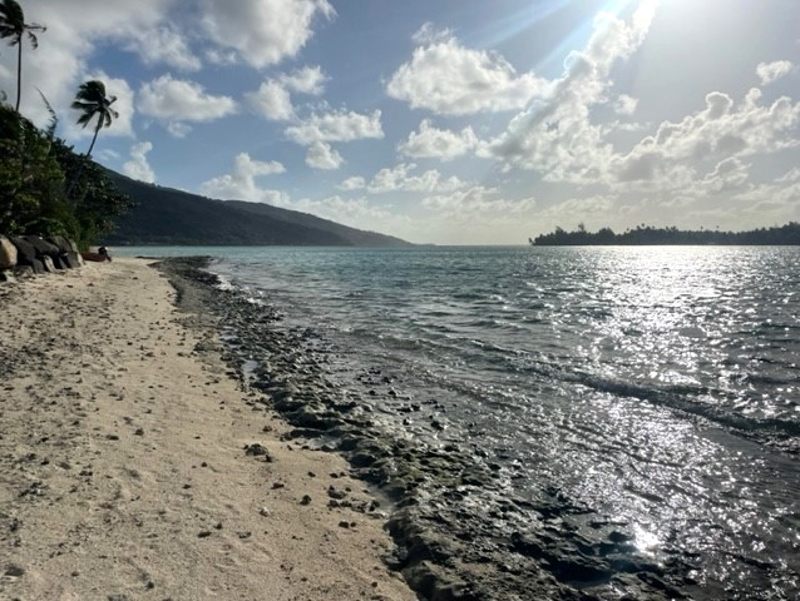
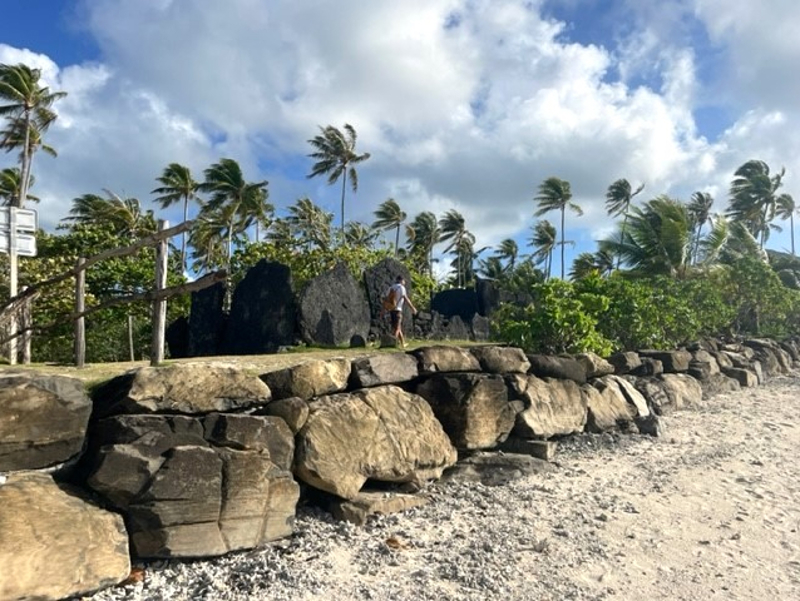
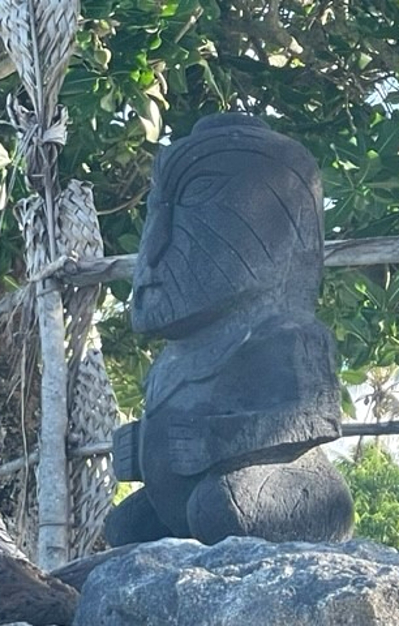
There is so much happening on Huahine, it’s hard to believe there are only about 6000 people living here, distributed in 8 villages and rural areas. With its laid-back, off-the-beaten-tracks lifestyle (even the roosters like their afternoon naps) it truly is one of nature’s best kept secrets.
We found some really great snorkel and dive spots, so more kodak moments of more fish. Can never get too much snorkel time.
White sandy beaches are fairly few a far between here, but we found a nice long one along the south shore of Huahine Iti. Went for a nice 3 hour long beach walk along Avea Bay and around the southern point – passed a couple small restaurants, a nice small resort, a campground, several basic beach homes, thousands of baby sea cucumbers, had to be careful not to trip on the many large crab holes on the beach, careful to pickup only shells that won’t sting and kill us, and finally turned back once we got to the Marae Anini, restored in 1969. While in this bay we saw our first sea turtles as we arrived and later often coming up for air, popping their heads out near Nutmeg. And, a few days later as we were leaving this beautiful bay, we were waved goodbye by a couple of eagle rays swimming alongside our boat.
Ua here vau ia oe,
XO XO
Gma & Gpa
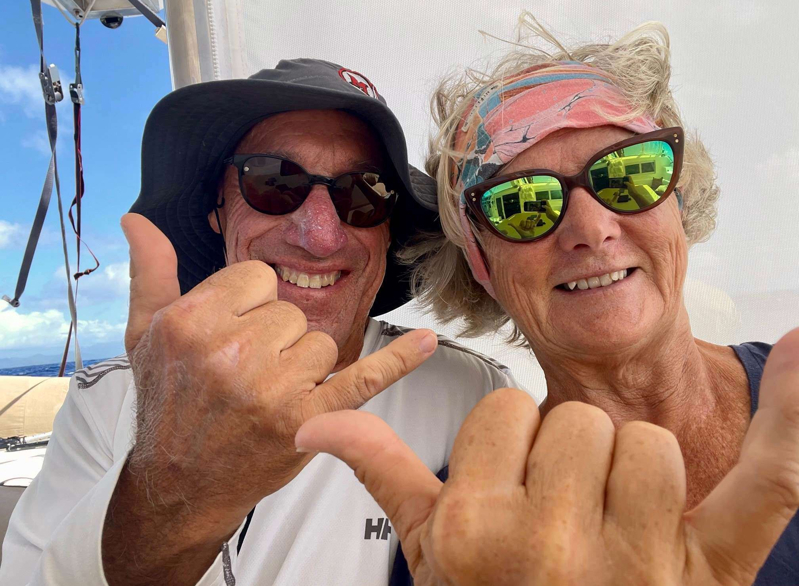
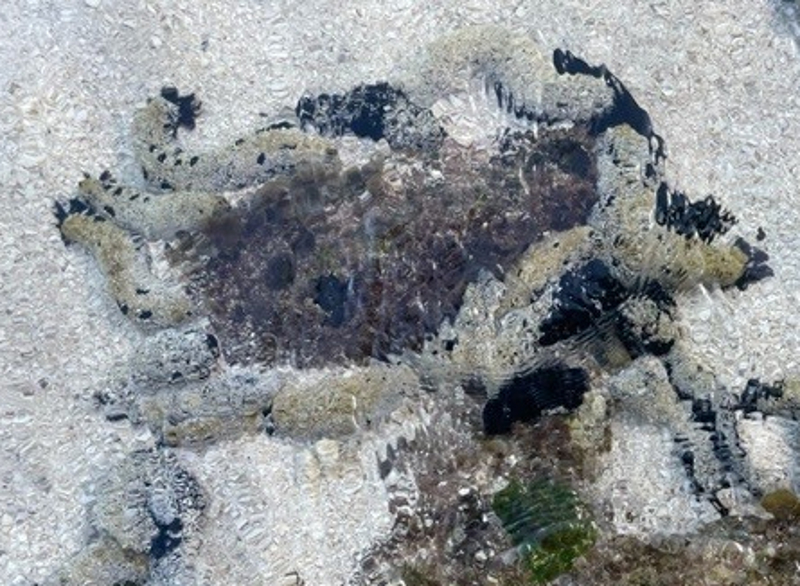

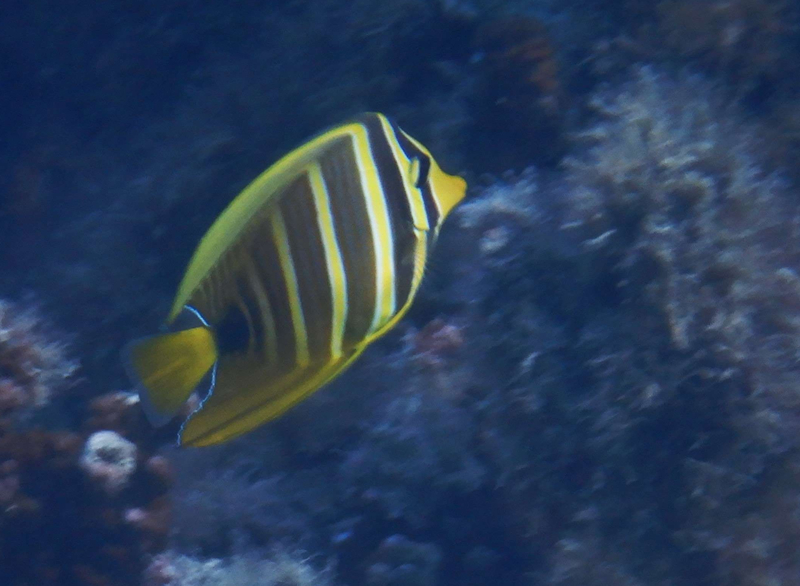
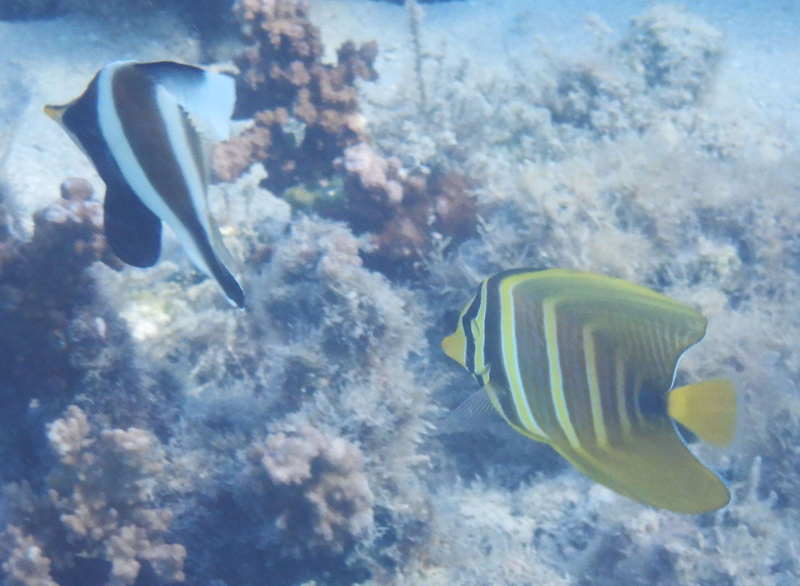
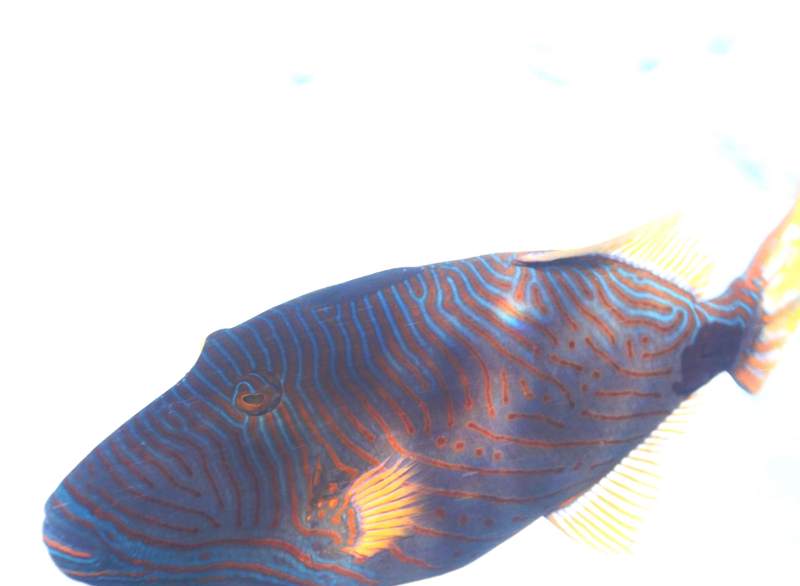
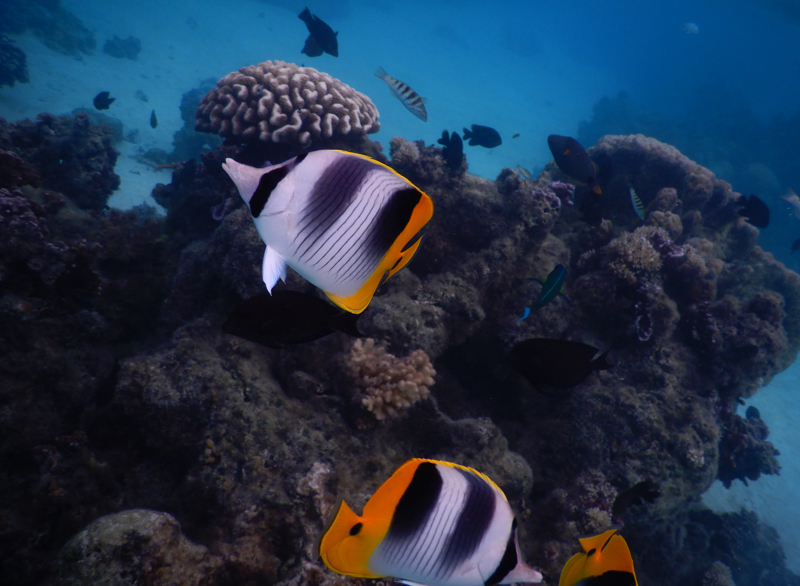
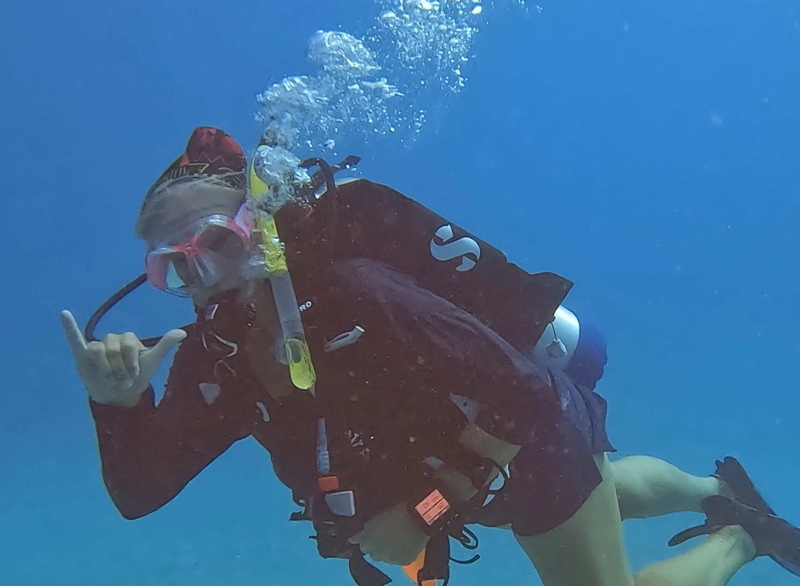
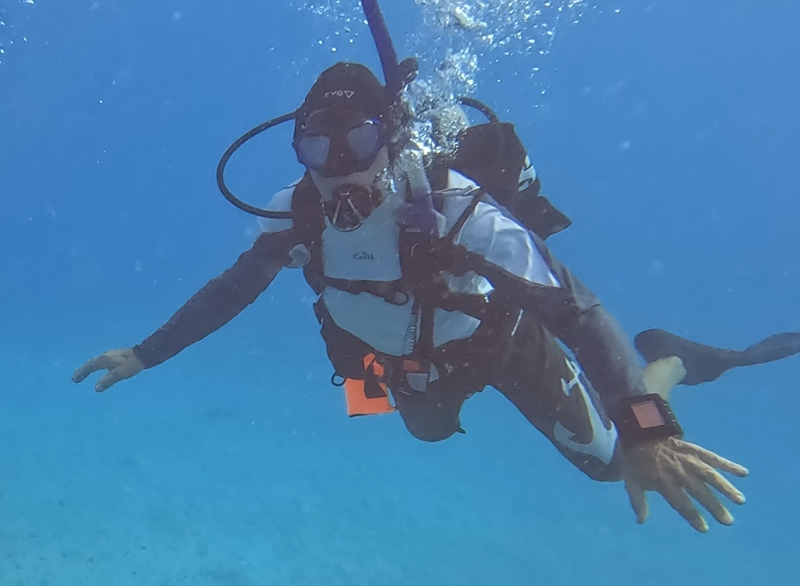
1.
Countdown
2.
...and We're OFF!
3.
...and waiting.
4.
Sailing Away!
5.
The San Blas
6.
Panama
7.
The Panama Canal
8.
The Transit
9.
Panama City
10.
27 Days at Sea
11.
The Marquesas
12.
Tuamotu Archipelago
13.
Moorea
14.
Tahiti
15.
On Vacation
16.
Raiatea
17.
Taha'a
18.
Huahine
19.
More Moorea
20.
Tahiti 2
21.
Sail On, Sailor
22.
Rarotonga
23.
Niue
24.
Vava'u
25.
Savusavu, Vanua Levu
26.
Yasawa Islands
27.
Viti Levu
28.
Viani Bay
29.
Taveuni Island
30.
Fiji Time
31.
Cyclone Season
32.
New Zealand